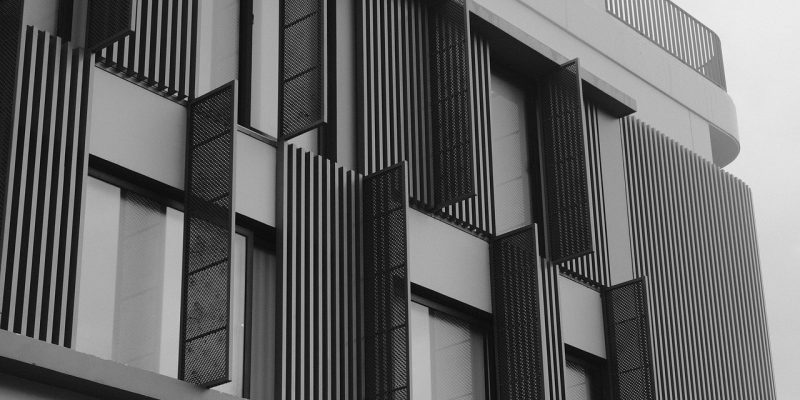In the world of architectural design, a new era of innovation is transforming the industry. Industrial architects, with their visionary minds and expertise in design principles and advanced technology, are revolutionizing our built environment. They are creating remarkable structures that reach towards the sky and sustainable urban spaces that serve as havens for communities. These buildings stand as a testament to their exceptional creative abilities.
Blurring Boundaries: The Rise of Industrial Architects
Industrial architecture has evolved beyond its traditional role in designing factories and warehouses. Today, it encompasses a wide range of structures that shape our modern cities. The architects responsible for these remarkable buildings are challenging conventional notions and utilizing creativity to not only create functional spaces but also visually appealing structures.
Reimagining Urban Spaces
Industrial architects have a fundamental principle: to transform urban spaces into versatile and vibrant environments. They no longer create generic designs that prioritize appearance over utility. Instead, modern architects merge form and function to seamlessly integrate their structures into the urban landscape. Whether it’s commercial buildings, residential towers, or cultural hubs, these spaces are carefully crafted to promote connectivity and community engagement.
The rise of mixed-use developments showcases how industrial architecture has shaped contemporary building design. Architects like commercial architect, AXO now seamlessly integrate commercial, residential, and recreational spaces into a single structure, resulting in lively centers where individuals can live, work, and play without needing to venture outside. This approach not only optimizes land utilization but also fosters a sense of community and connection among diverse groups of people.
Sustainability at the Forefront
Amid a time of increasing environmental worries, industrial architects are at the forefront of reshaping sustainable building practices. These architects understand that future buildings need to exceed standard energy-efficient lighting and passive cooling methods. They are embracing comprehensive design principles that consider every aspect of a building’s lifecycle – from the construction materials used, to energy consumption during operations, all the way to its eventual decommissioning.
Biophilic design, a concept gaining popularity in industrial architecture, aims to incorporate elements of the natural world into built environments. This approach involves integrating features like green walls, rooftop gardens, and ample natural lighting. By blurring the boundaries between indoor and outdoor spaces, architects not only create visually appealing areas but also promote occupant well-being while reducing the ecological impact of the building.
Technological Integration
The field of industrial architecture is pushing the boundaries of design by seamlessly integrating technology into its practice. With cutting-edge materials and advanced automation systems, architects are embracing the marriage of architecture and technology. By incorporating data-driven insights, they can optimize every facet of a building’s functionality, ensuring energy efficiency and an enhanced user experience.
The idea of “smart buildings” has become closely associated with the impact of technology on industrial architecture. These buildings are equipped with sensors, interconnected systems, and data analysis tools that allow for real-time monitoring and adaptive responses. For example, smart lighting systems adjust brightness based on natural light levels, while HVAC systems regulate temperature based on occupancy patterns. This integration improves user comfort and also promotes resource conservation.
The Collaborative Paradigm
In this era of architectural innovation, collaboration has become crucial. Industrial architects are breaking down traditional barriers and forming partnerships with experts from various fields. Engineers, urban planners, environmentalists, and sociologists are joining forces to design buildings that are visually impressive while considering the surrounding context and social responsibility.
Human-Centric Design
The evolution of industrial architecture revolves around a steadfast dedication to human-centric design. Architects no longer settle for creating structures that simply meet functional needs; instead, they aim to craft spaces that elicit emotions and enhance the human experience. This change in perspective is evident through the focus on open layouts, adaptable areas, and designs that inspire creativity and foster well-being.
Cultural Identity and Diversity
In a world full of diverse cultures, industrial architects understand the significance of incorporating local identities into their designs. They acknowledge that buildings are not standalone structures; instead, they are vital components of a community’s cultural fabric. By blending elements of local heritage and identity, architects create structures that deeply connect with the people they cater to.
Industrial architects are at the forefront of a new chapter in architectural design, pushing boundaries and transforming our perception of buildings. With their unwavering commitment to sustainability, technology, and design centered around people, they are leading the way towards unexplored territories. The upcoming generation of structures will serve as a testament to their innovative spirit, leaving an unforgettable impact on both the urban landscape and the individuals who experience these remarkable creations.











